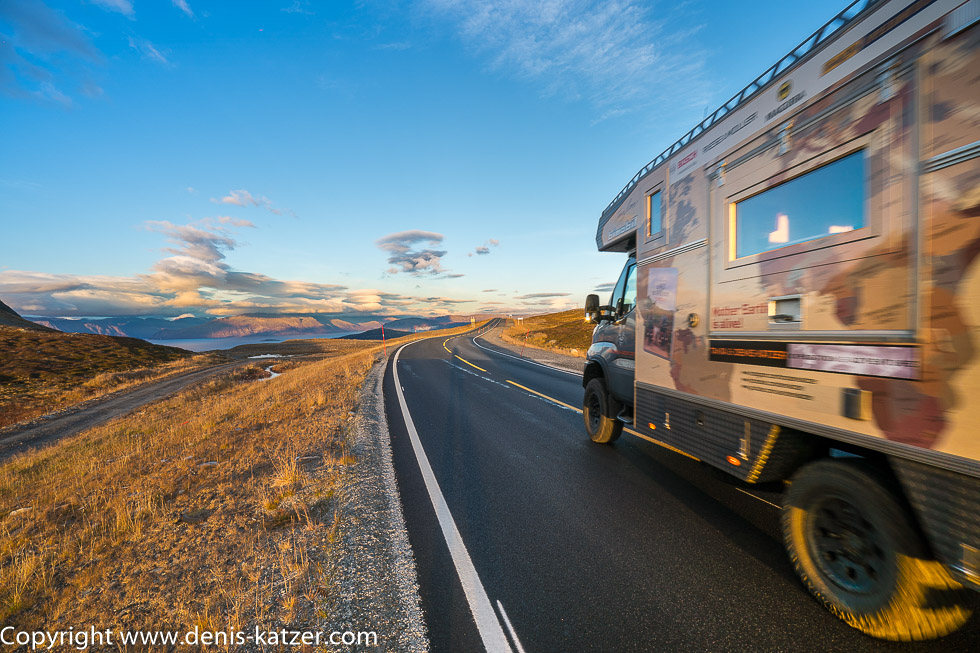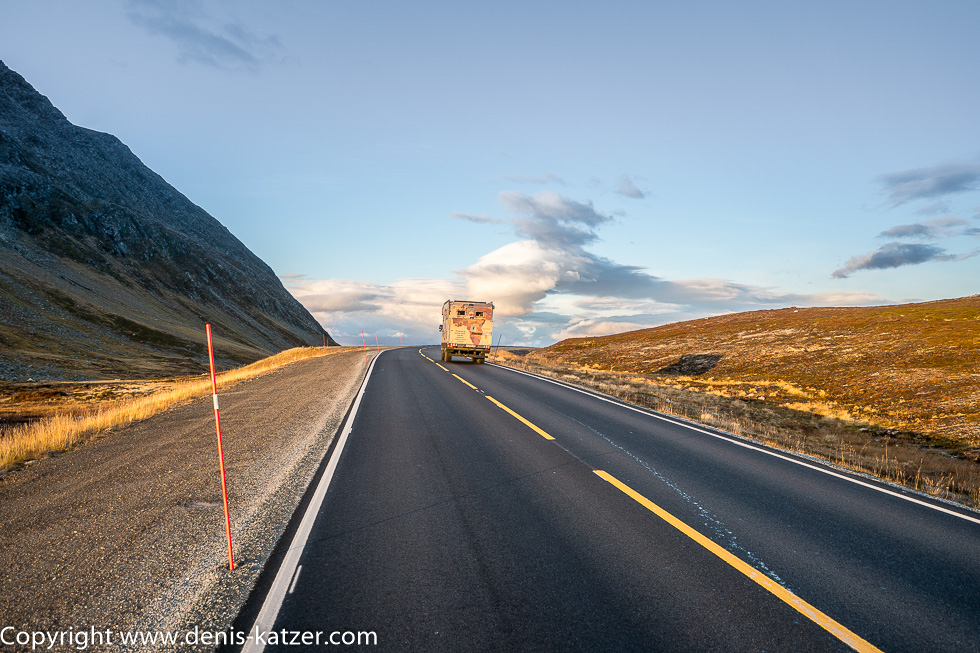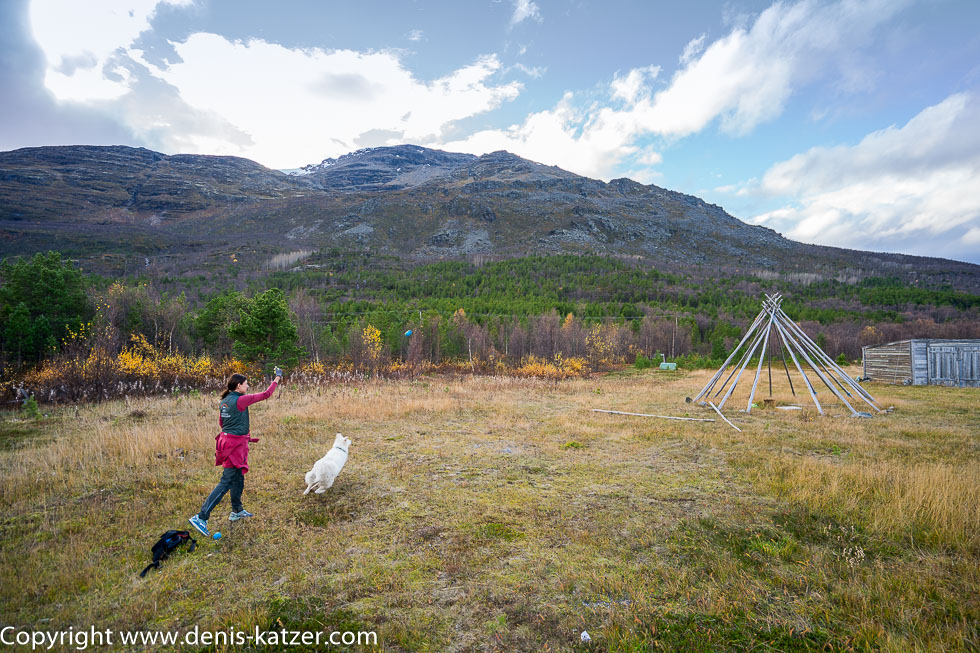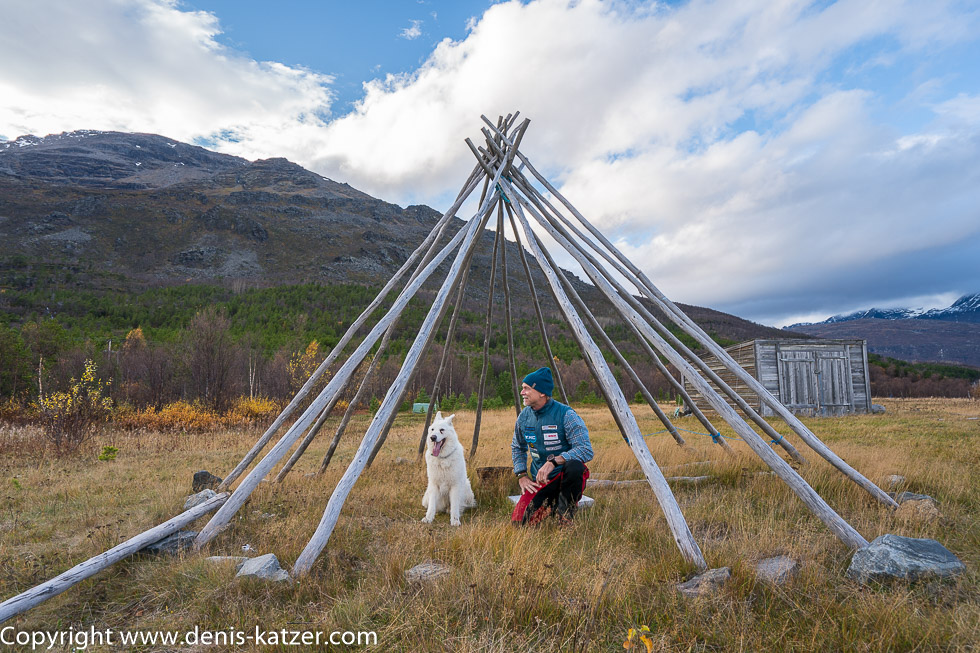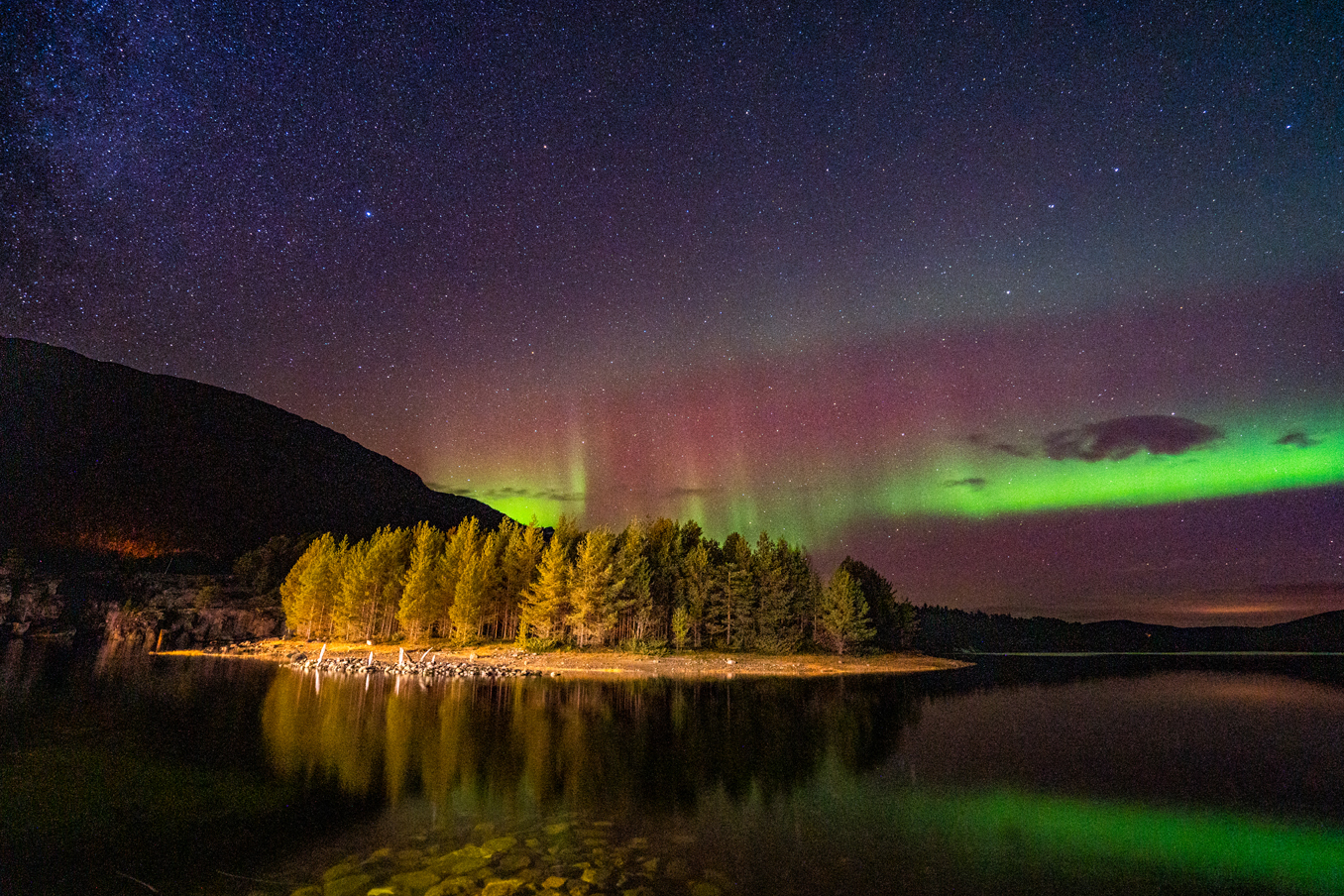
Between fell and fjord, between light and shadow
N 70°03'27.3'' E 022°27'06.0''
07.10.2020
Day: 066
Country:
Norway
Location:
At the Langfjord
Daily kilometers:
268 km
Total kilometers:
6253 km
Soil condition:
Asphalt / unpaved
Bridge crossings:
6
Tunnel passages:
7
Sunrise:
07:02
Sunset:
17:34
Temperature day max:
10°
Night temperature min:
7°
Time of departure:
1:30 pm
Arrival time:
6:30 pm
(Photos of the diary entry can be found at the end of the text).
Click here for the podcasts!
Link to the current itinerary
(For more posts click on one of the flags in the map)
“How’s our camera?” asks Tanja as I sit down at the table straight after getting up to put it through its paces again. “The lens has taken a hit and the autofocus only works to a limited extent. Fortunately, we have a replacement camera with us. When we get back to Germany, I’ll send the lens in. It will certainly be expensive.” “It’s just money. The main thing is that we’re healthy.” “As always, you’re right,” I reply and start editing the photos I took yesterday and writing a few texts. I look out of the window from time to time. Two anglers stand on the bank and cast their rods. I would love to stay a few more days in this unexpectedly beautiful place, but because of the predicted snowfall we shouldn’t take too much longer. “We can stay at the North Cape for a few days. You can write there and if it really starts to snow, we can head south again,” Tanja suggests. “Then we should also consider canceling our visit to Tromsø,” I think. “Tromsø, the Paris of the North? Why? Is it a long detour to get there?” “About 150 kilometers. And when we visit the city, we want to see a few highlights.” “So we’ll lose about three days. I’m still of the opinion that we should drive to the Cape as quickly as possible. After all, the Northern Lights are the main destination of this trip,” says Tanja. “Okay, then we’ll postpone our visit to the city until another time. You can’t have everything,” I reply.
We leave the Balsfjord at 13:30. We stock up on food and water in a supermarket. We cruise further north on the E6. We cross valleys covered in birch and coniferous forests. You pass boggy lakes and snow-covered mountain ranges. The landscape seems to be getting rougher, but this does not detract from its beauty. There are a few abandoned Sami tepees on the side of the road. In summer, they sell their souvenirs to passing tourists. They already left their camp in October. Only the wooden poles of their tents still towering into the sky bear witness to their existence. Tanja throws Ajaci a few balls, then we continue our journey. We drive along the Lyngenfjord, which at 121 kilometers is the second longest fjord in Norway. The impressive coastal road is extremely winding and in some places suddenly quite narrow. An icy cold wind blows on a mountain range, which seems to herald a change in the weather. The sun is already very low in the afternoon. Their rays bathe the steppe-like mountain landscape in a surreal, soft and warm light. From November 20 to January 22, the sun remains below the horizon in this region. However, the snow-covered landscape, which reflects every last bit of light, and the clear air mean that it is not completely dark. Fascinated as we were on the first day of our trip to Norway, we stop again and again to capture the breathtaking change between fell and fjord, the interplay of light and shadow, the pointed mountain peaks and glaciers sparkling in the sunlight. After 268 kilometers, 7 tunnel passages, 6 bridge crossings and a fascinating day, we look for a place to spend the night. We find what we are looking for right on the shore of the Langfjord. Thanks to the off-road capability of our Terra, we can reach this difficult-to-access location. A large flock of seagulls flies over the grassy roof of a fisherman’s hut, screeching loudly. The birds settle on the dark blue, clear water. Small waves crash onto the shore. A dark carpet of clouds stretches across the fjord, which stretches for around 31 kilometers between the mountains. The last rays of the setting sun cut through a few frayed holes in the clouds, bathing the snow-covered peaks in a hazy light and reflecting in the diffuse glow on the cold sea…
